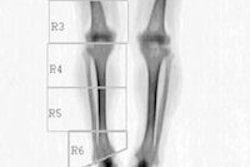Bone mineral density (BMD) in adolescent boys may be inversely associated with how much time they spend at the computer, according to a 4 April presentation at the World Congress on Osteoporosis, Osteoarthritis and Musculoskeletal Diseases in Seville, Spain.
In boys, but not girls, more screen time was associated with lower bone mineral density even after adjustments, the Norwegian research team reported. Along with nutritional factors, physical activity can also greatly impact skeletal growth in young people -- and researchers fear that today's sedentary lifestyles can potentially affect bone health and obesity, the group reported.
The Norwegian study aimed to determine if greater weekend computer use is associated with reduced BMD. They examined 463 girls and 484 boys 15-18 years old using dual-energy x-ray absorptiometry (DEXA), also collecting data on lifestyles via questionnaires and interviews, and adjusted for myriad factors including age, sexual maturation, BMI, leisure time activity, smoking, alcohol, cod liver oil, and soda consumption to tease out associations between BMD and screen time.
Boys had more screen time than girls, and not only was this increased time associated with lower BMD, it was correlated to higher BMI levels. In contrast to the boys, girls who spent four to six hours in front of the computer had higher BMD than girls who spent less screen time -- a finding that couldn't be explained by adjustments in the various parameters.
Bone mineral density is a strong predictor of the future risk of fractures, commented lead author Dr. Anne Winter from Arctic University of Norway, in Tromsø. The findings in girls merit further exploration in different population groups and studies, she said in a statement accompanying the study.



















